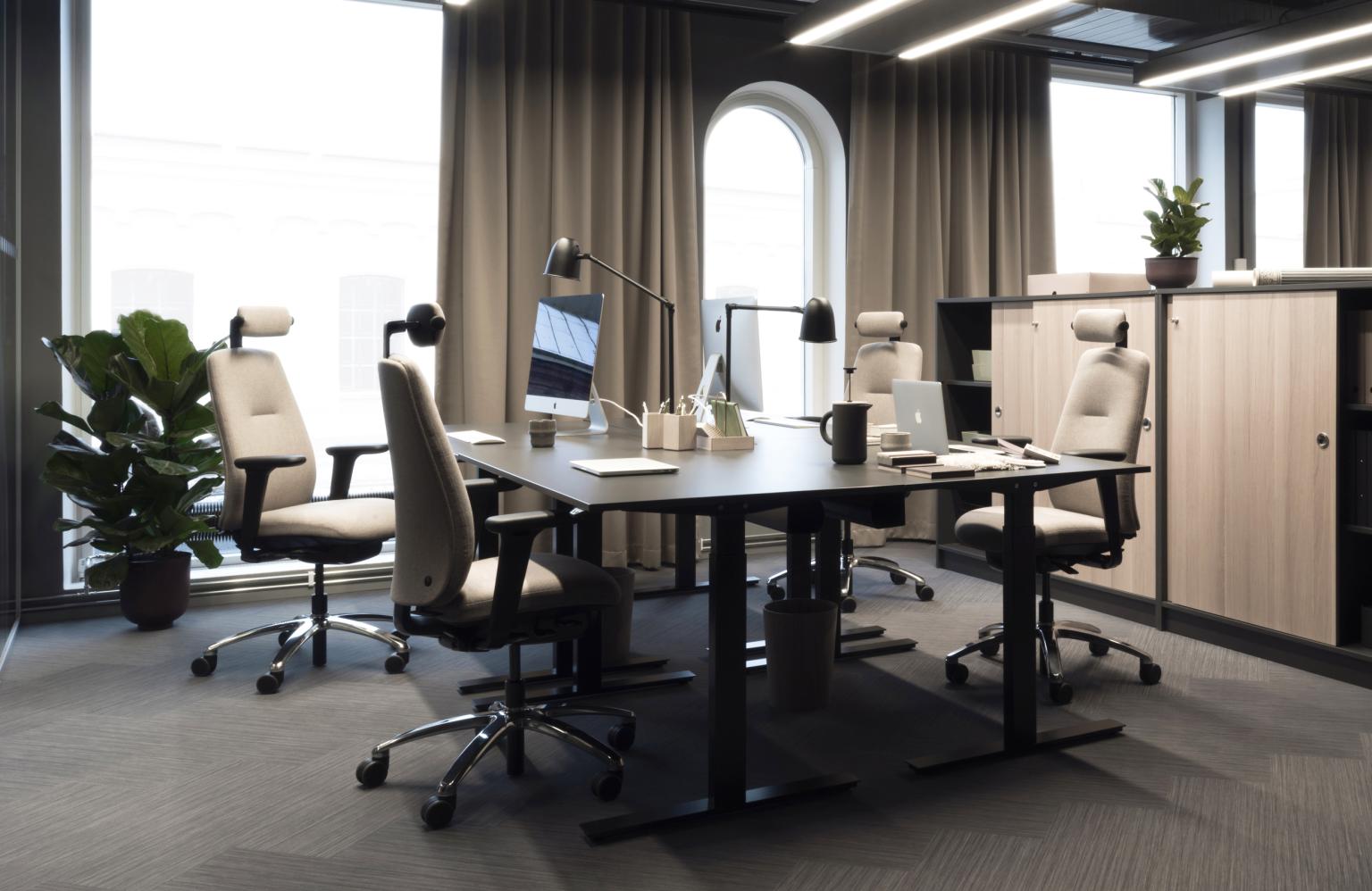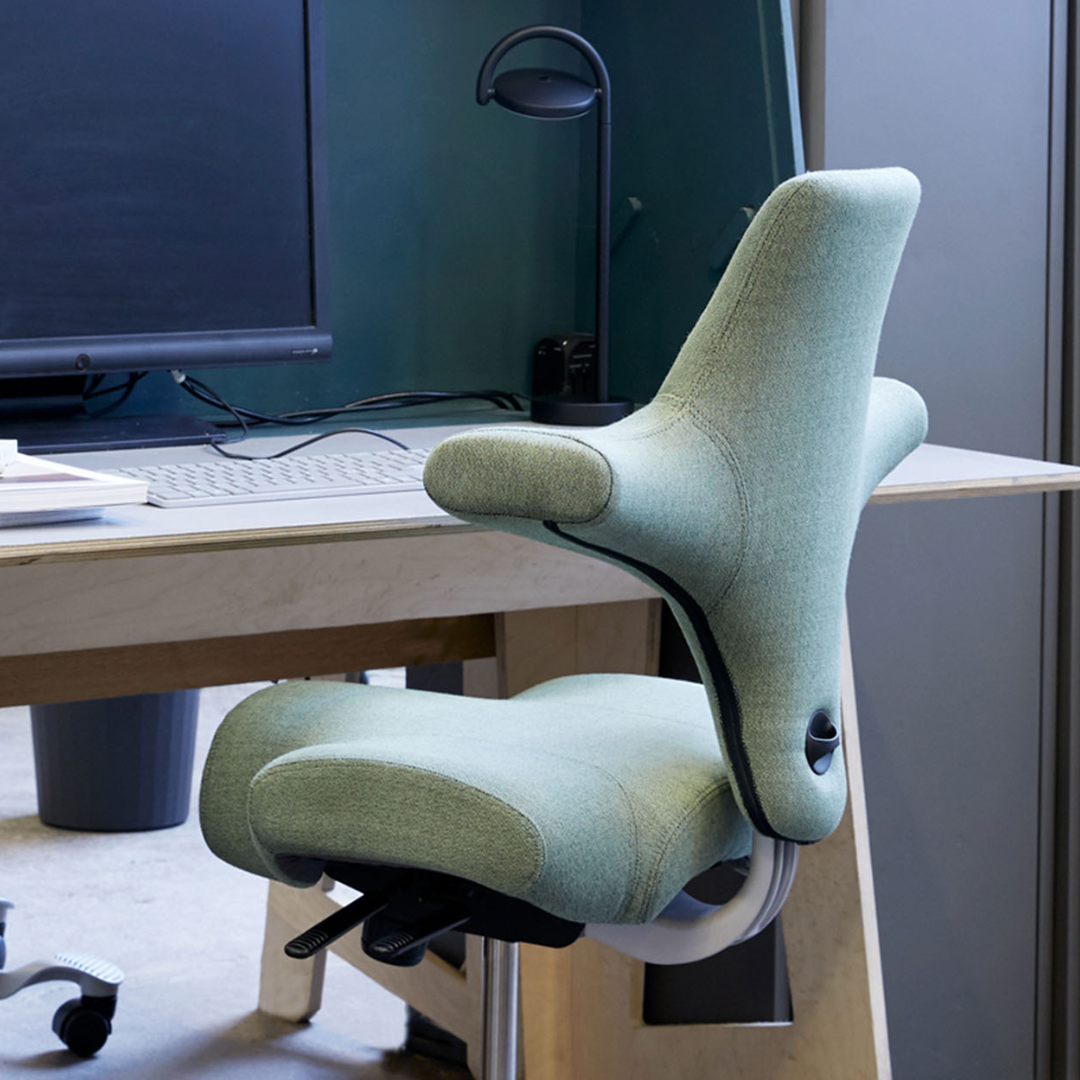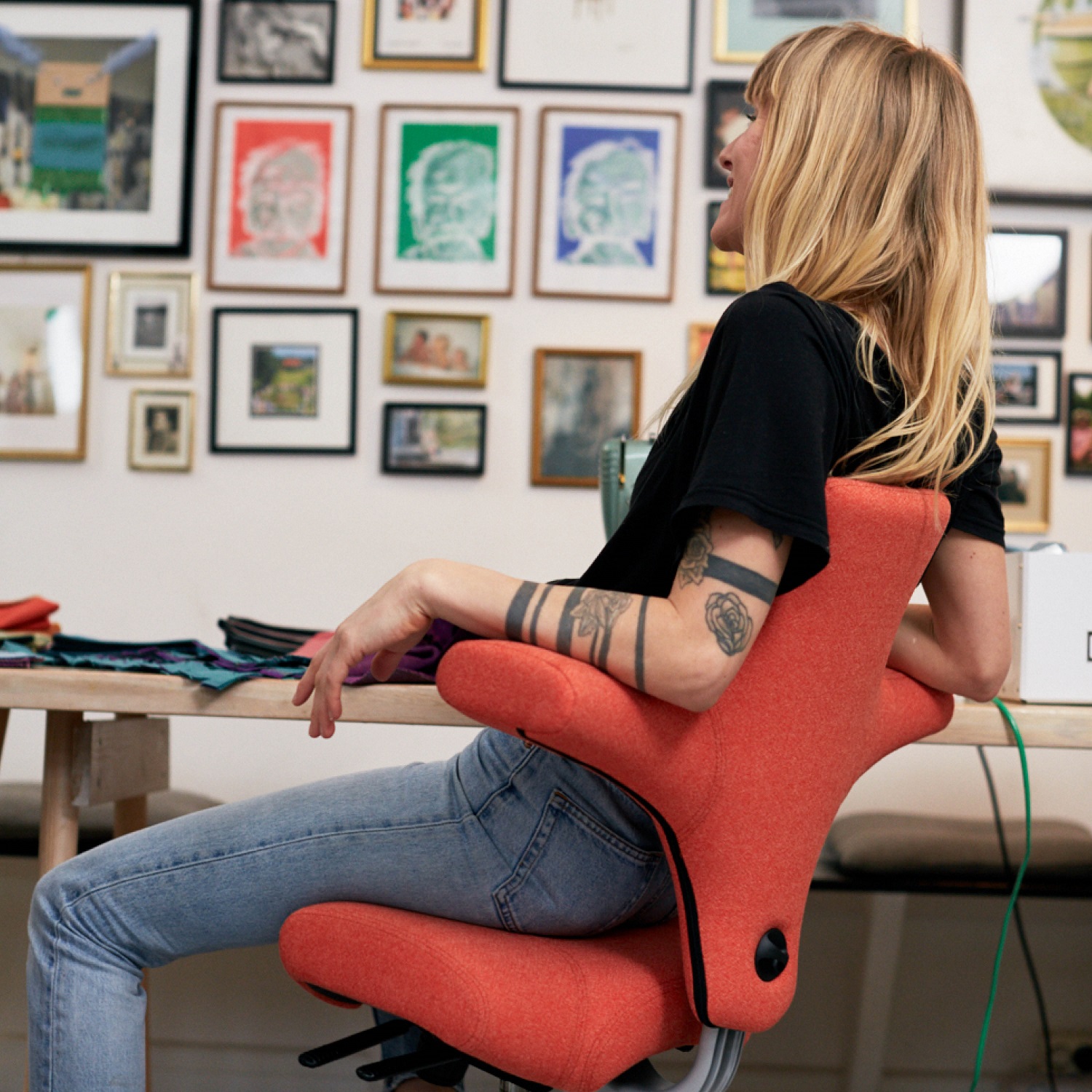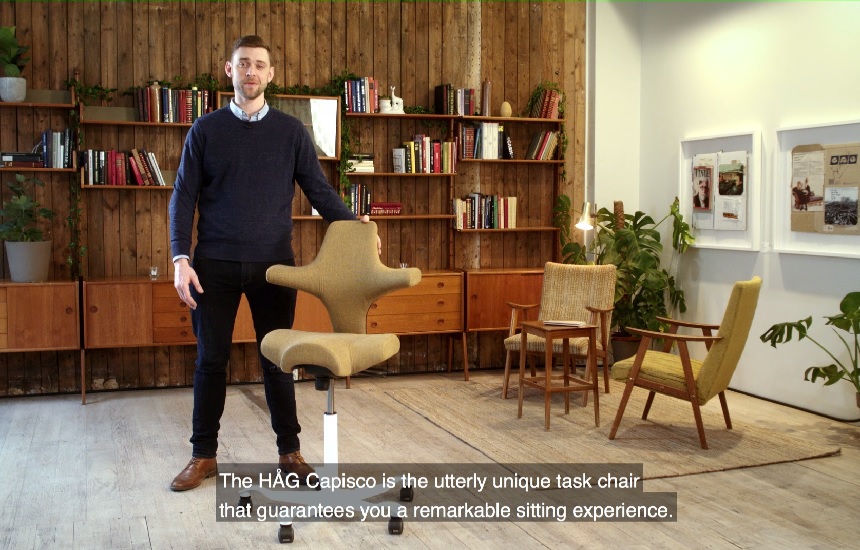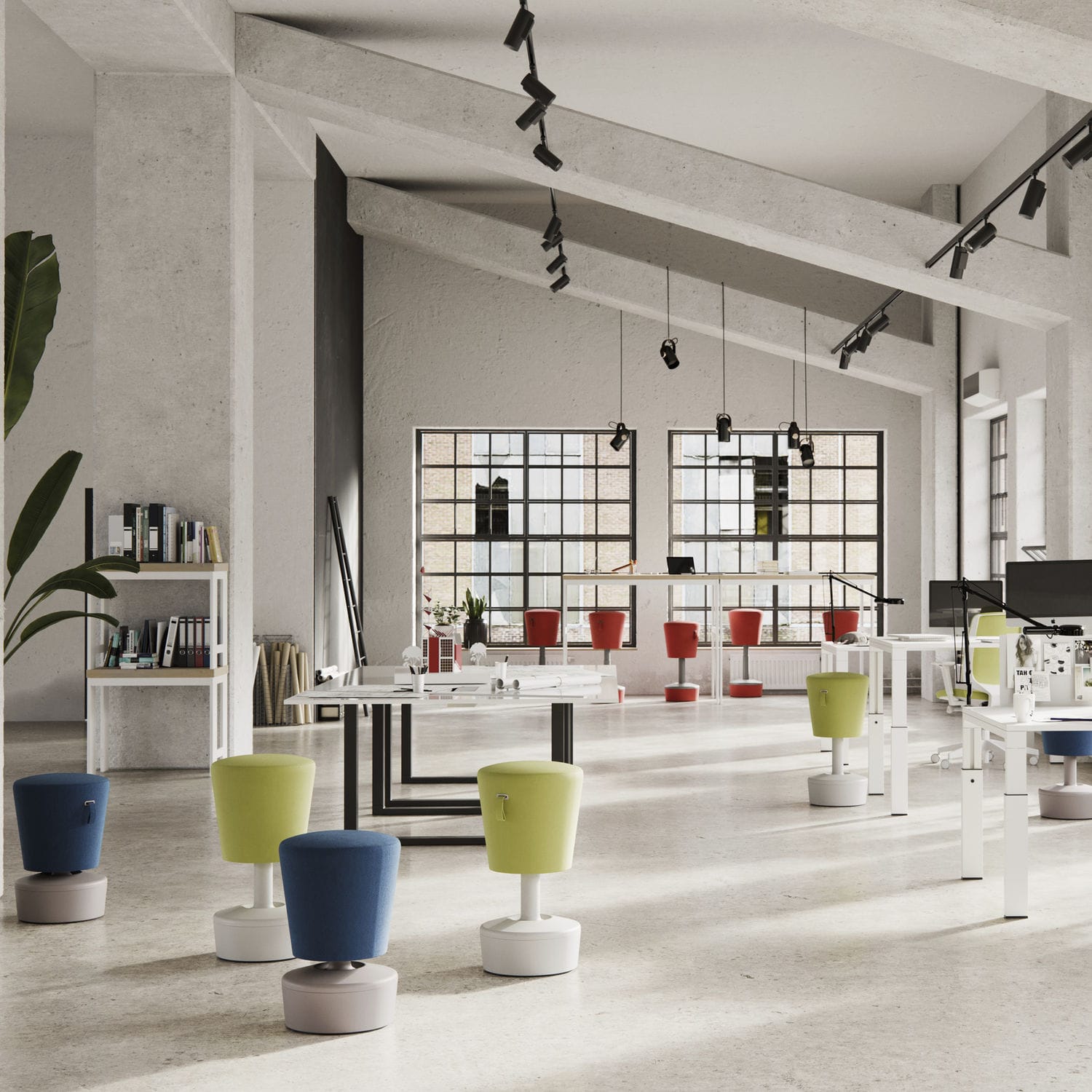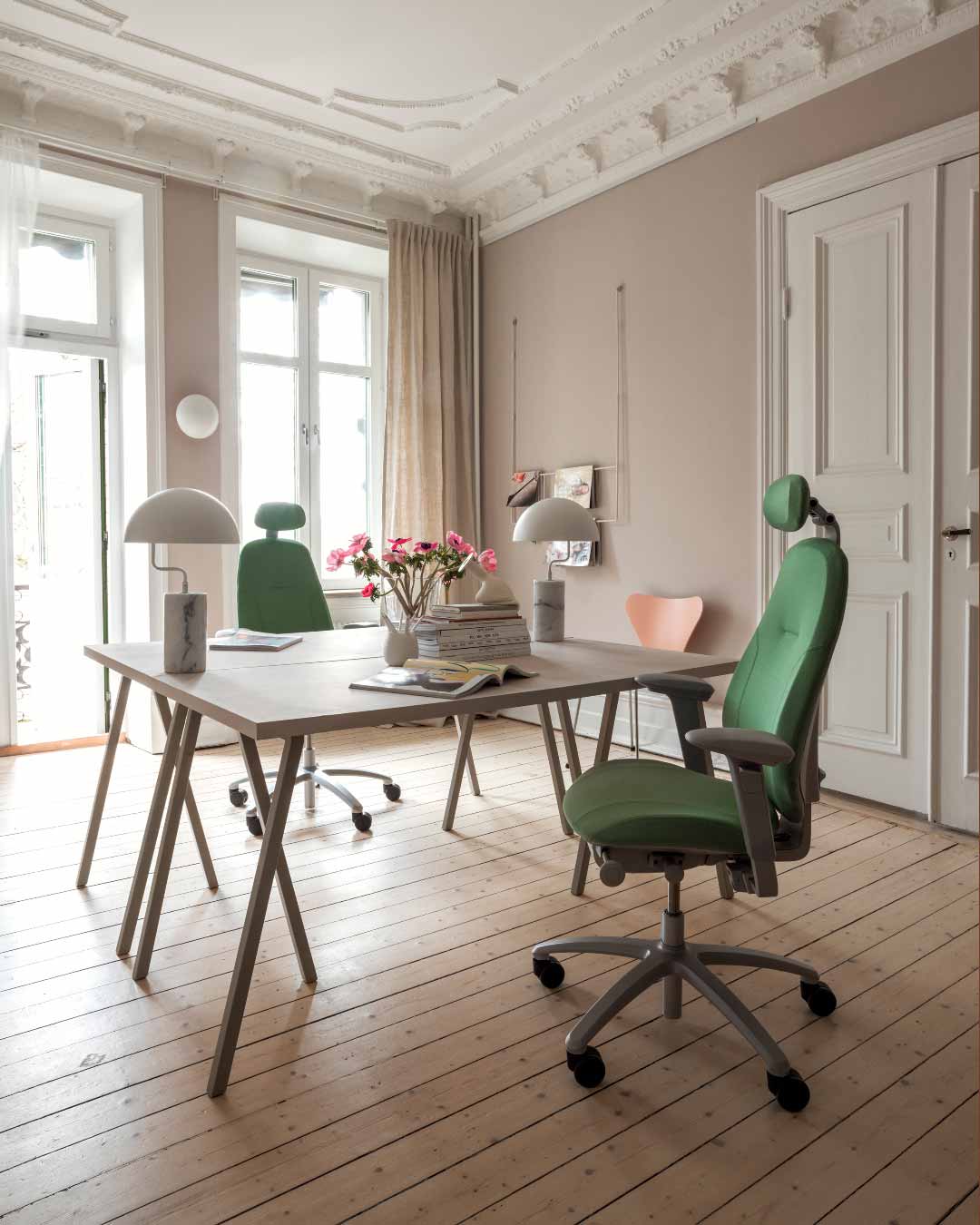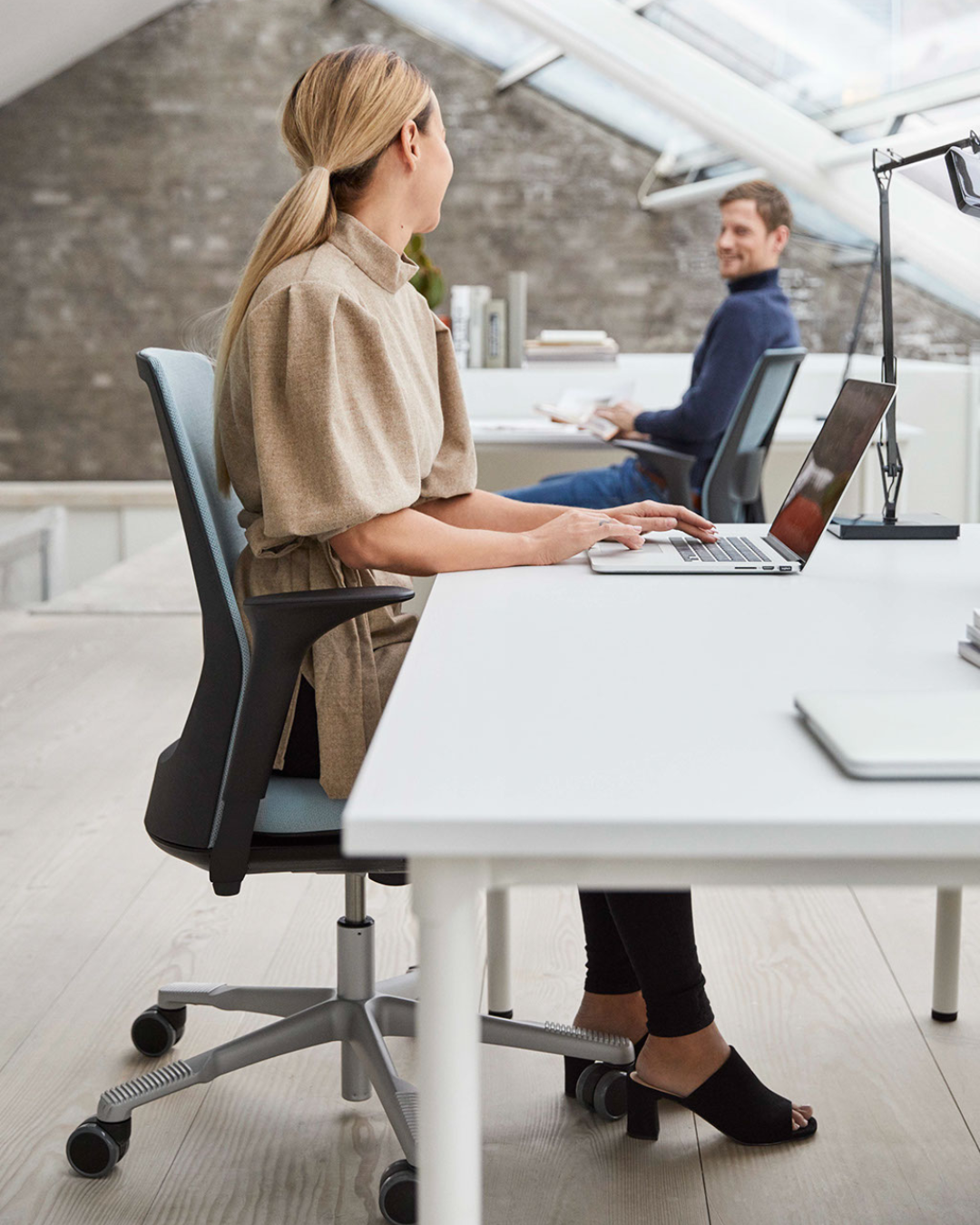The benefits of active sitting
Active sitting is increasingly becoming recognised as a way of reducing the impact sitting has on our bodies, as explained by Flokk Senior Ergonomist Sukhi Assee; “Active sitting has many benefits. First and foremost, the specific products designed for active sitting encourage core strength. They achieve this by working the muscles that include upper and lower abdominal muscles, shoulder, and lateral muscles that work their way down to the hips.
In contrast, A C-shape posture can cause muscle weakness, fatigue, and stiffness. Active muscles promote better blood and oxygen circulation around the body, encouraging consistent muscle contraction, which revitalizes the mind and body.”
It’s all about changing your posture as frequently and as intuitively as possible, without impacting on your focus and concentration. Research shows that humans naturally change their posture two to three times per minute whilst in a standing position, which engages your muscles that support posture and promote core strength. In a normal chair, these muscles are relaxed, and when sat for hours on end, weaken.
Examples of Active Seating
Active sitting is achieved by using an active chair. These are chairs that are designed specifically to promote unconscious movement. They often require a move open angle between your legs and torso, making your legs do more work, which in turn takes the pressure off your whole lumbar region and reduces strain on your spinal discs. In the long run, it will alleviate backpain caused through regular static sitting.
Active seating comes in a variety of formats, from balance stools to specially designed task chairs that more closely resemble traditional desk chairs.

